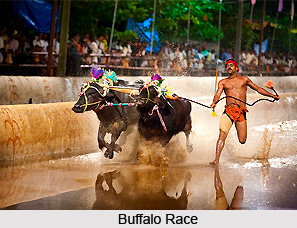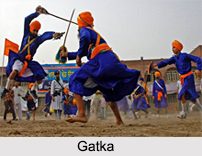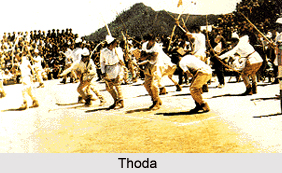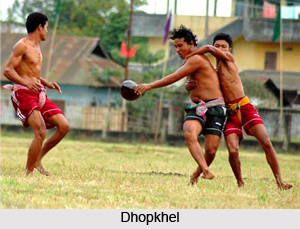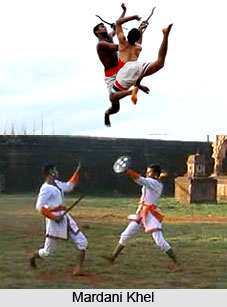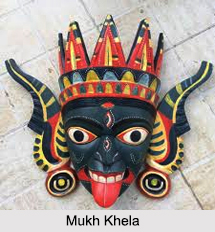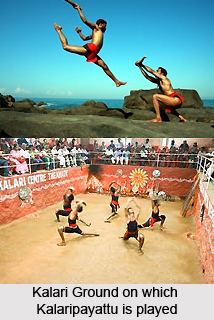 Kalari has a Puttara or a platform where flowers are kept. It is a seven tiered platform that is placed in the south-west corner of every Kalari. It houses the guardian deity of the Kalari. The seven tiers symbolise the seven abilities that a person must possess: Vignesva (strength), Channiga (patience), Vishnu (power to command), Vadugashcha (the posture), Tadaguru (training), Kali (the expression) and Vakasta - purushu (sound). The other incarnations of Bhagavathi or Lord Shiva are installed in the corners. Flowers, incense and water are offered to the deity daily. The practitioners pray to the deity before starting the day. Kalari is also a temple of religious worship with it own cult and ritual.
Kalari has a Puttara or a platform where flowers are kept. It is a seven tiered platform that is placed in the south-west corner of every Kalari. It houses the guardian deity of the Kalari. The seven tiers symbolise the seven abilities that a person must possess: Vignesva (strength), Channiga (patience), Vishnu (power to command), Vadugashcha (the posture), Tadaguru (training), Kali (the expression) and Vakasta - purushu (sound). The other incarnations of Bhagavathi or Lord Shiva are installed in the corners. Flowers, incense and water are offered to the deity daily. The practitioners pray to the deity before starting the day. Kalari is also a temple of religious worship with it own cult and ritual.
Inside a Kalari there are Gurutharas or a place where a lamp is kept burning which is a mark of respect to all the gurus of the kalari. Kalari is considered as a pre-school in Kerala. At the age of 3 children are placed in Kalaris. It is still a practice at some villages in Kerala. The teacher in Kalari is known as Asan.
Construction of a Kalari
A Kalari is constructed by digging a hollow in the ground thereby forming a sunken area four feet in depth, forty-two feet in length and twenty-one feet in breadth. It is called Kuzhi Kalari.
Kalaris entrance is in the east in order to let in the morning sunlight. This leads into the forty-two foot leg running East-West while the twenty-one foot leg runs North-South. It is built in the south-west side of the main plot. With the help of mud the floor of the Kalari is levelled.
Anka Kalari and Ankathattu
Ankam means war. Ankathattu is a four to six feet high platform that is constructed temporarily for the purpose of fighting duels. It is constructed as per tradition and is in the centre of the ground from where people can watch the duel. This arrangememt is called Anka Kalari.
In Kerala quarrels between local rulers were resolved by fixing an Ankam between two Ankachekavars. Each ruler was represented by one Ankachekavar. The winner was the ruler represented by the surviving Ankachekavar.
